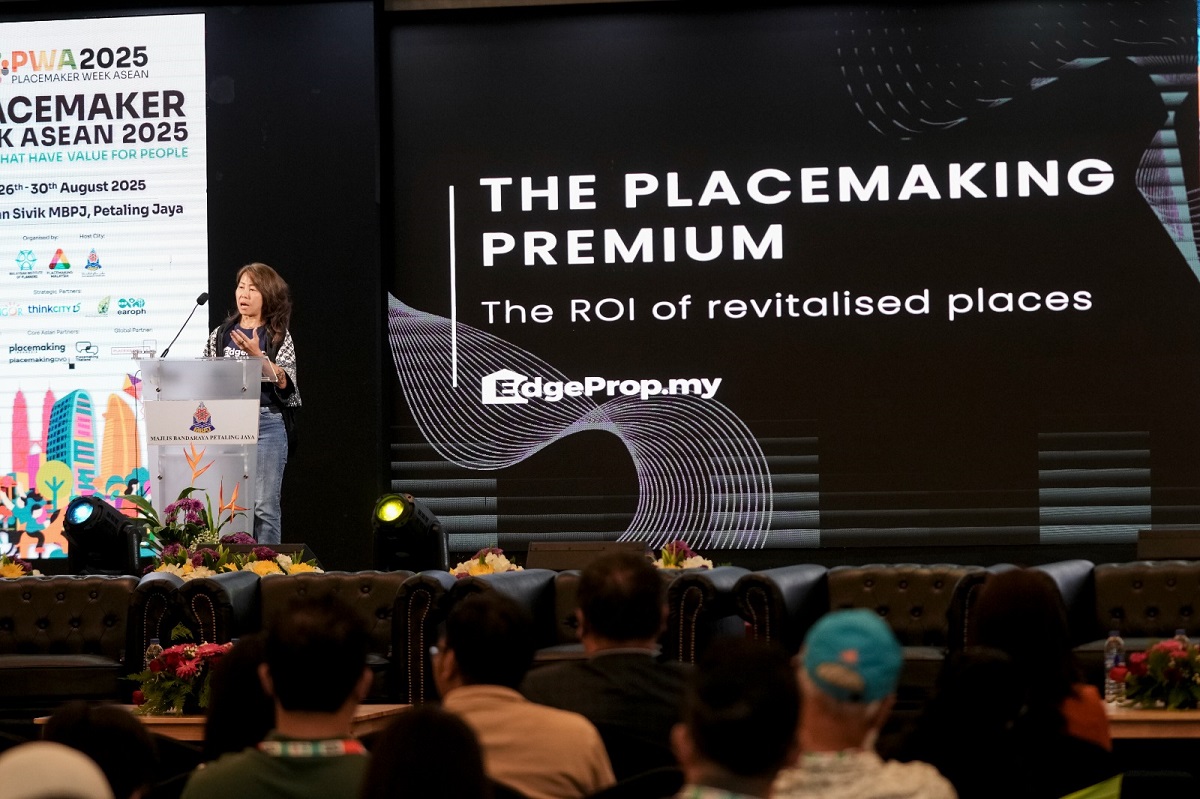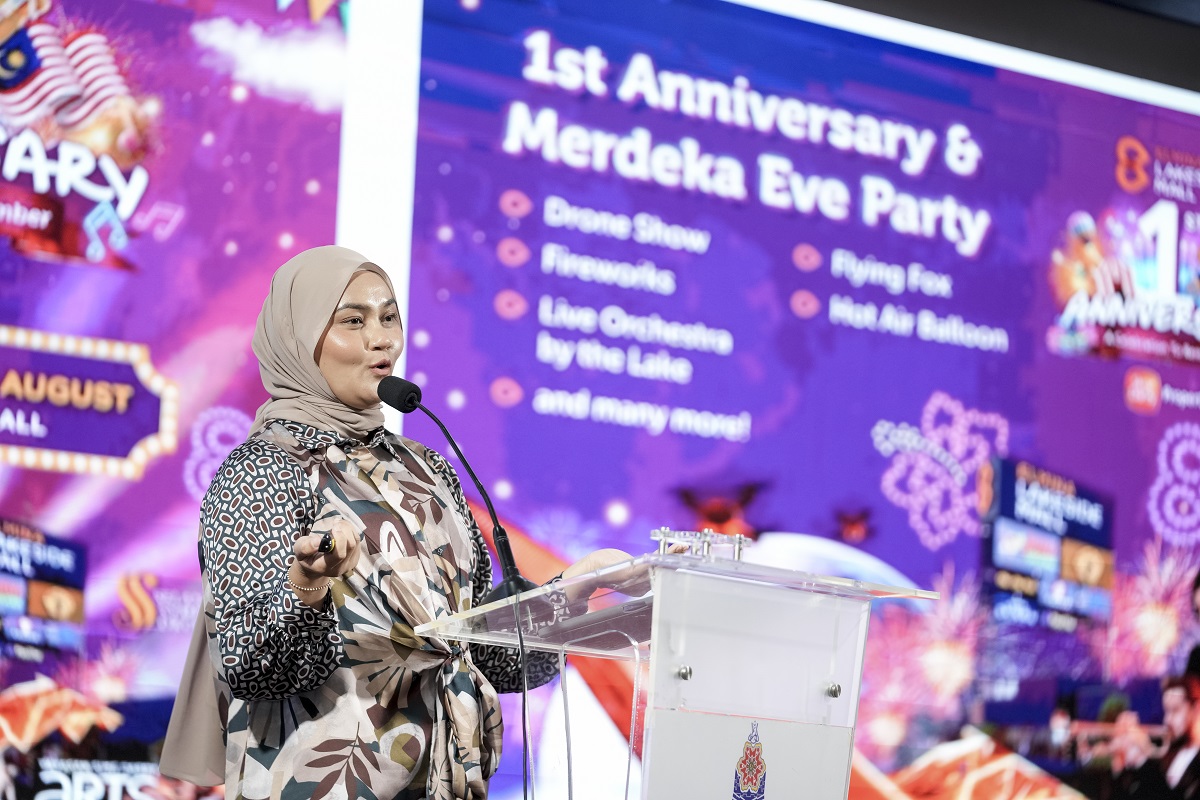
- Successful revitalisation combines economic, social and environmental goals, creating inclusive and vibrant communities rather than just focusing on profitability.
PETALING JAYA (Aug 29): Private-led rejuvenation can transform streets and neighbourhoods, attracting new businesses, creative cafes, and younger residents.
EdgeProp editorial and branding lead Jacqueline Lim shared during her presentation “Impact of Placemaking in Developments” panel session about successful case studies where rejuvenation initiatives led to better places and, as a result, demonstrable return on investment ROI.
Examples include the Street of Joy at Damansara Uptown (led by See Hoy Chan), Coronation Avenue in Johor Bahru (led by Think City and MBJB), Setia Bayuemas Lake Park in Klang (by S P Setia), and Desa ParkCity in Kuala Lumpur (by Parkcity Group).
“As a model masterplanned township, Desa ParkCity’s successful placemaking showcases a fundamental shift in real estate strategy. The ROI is not simply in transactional gains, but in the long-term asset value derived from a highly desirable and sustainable community. This model of community-building is what leads to enduring property values, sustained high demand, and a powerful, trusted brand,” she stated.

“Small-scale, low-cost experiments in public spaces can reveal community needs before committing large investments,” she explained.
She added that successful revitalisation combines economic, social and environmental goals, creating inclusive and vibrant communities rather than just focusing on profitability.
Read also
Placemaker Week Asean 2025: Build cities for social interaction to counter depression
“Placemaking should focus on pedestrian connectivity and accessibility, making amenities reachable within 10 minutes to foster community interaction.
“Government support, grants and guidelines are essential to ensure these initiatives benefit existing businesses and residents without displacement,” Lim said.

Urban planning should also respect indigenous people while balancing masculine and feminine principles to create caring, inclusive communities.
Placemaker Week Asean (PWA) 2025 convenor and co-chair Lee Jia Peng said listening to those who came before is essential to creating inclusive communities.
“Placemakers must inject the feminine nurturing, care, and fostering into city-building alongside traditional masculine approaches.
“Residents have a personal duty to care for their neighbourhoods, from green spaces to everyday interactions,” she said during her speech at the PWA 2025 closing ceremony at the Petaling Jaya City Council (MBPJ) Civic Hall.
She added that experimentation is the key to small, cost-effective projects that can reveal community needs before large investments are made.
“Holistic well-being matters. If you are unwell inside, you cannot do well outside,” she stated.
Women in cultural and historical narratives
Torrens University Australia Tourism professor Catheryn Khoo said that only a tiny fraction of public statues honour women, leaving female voices largely absent from the spaces we share.
“This lack of representation makes public spaces feel gendered, excluding women from cultural and historical narratives.
“My research in tourism highlights the need to make public areas safer and more inclusive for women,” she stated during her presentation at the “Reclaiming Spaces for Local Community” panel session.
She said her team’s projects map and celebrate women’s stories through sculptures, memorials, and walking tours that engage communities and visitors.
“I hope developers and placemakers will consciously include women’s histories in future urban spaces,” she said.
City of Elmina
Moreover, Malaysian Institute of Landscape Architects (ILAM) Council honorary treasurer and Sime Darby Business Unit 2 in Bandar Bukit Raja manager LAr. Anith Ahmad Rosli stated Sime Darby Property Bhd’s flagship City of Elmina, a 6,500-acre development that integrates residential, institutional, recreational and commercial spaces, highlights how sustainability features are hardwired from the early stages.

“These include the 300-acre Elmina Central Park, integration of existing forest reserves, and innovative water management systems designed to reduce flood risks while enhancing liveability.
“We want to foster resilient communities and create positive experiences, while ensuring our projects contribute not just to people, but also to the planet,” she said during her presentation.
Execution matters
TGV Cinemas chief design and project officer Mardiana Rahayu stated that while many developers have grand visions, their execution often falls short, and success requires aligning teams, ground staff, and management from the start.
“True placemaking isn’t about marketing events. It is about creating spaces where communities naturally engage, giving residents a sense of ownership.
“Sustainability must be built into a development from day one, ensuring lively, usable spaces without relying on constant promotional activities,” she said during her presentation at the “Impact of Placemaking in Developments” panel session.
Mardiana added that successful projects anticipate future trends and integrate flexibility, mixing retail, public spaces, and amenities to support long-term appeal.
“Developments thrive when they create jobs and support a sustainable local ecosystem, balancing profitability with community value,” she said.
Citizens as co-creators
Thailand-based Shma Company Limited founding director Yossapon Boonsom said that creating a vibrant, inclusive city isn’t just the government’s job; it requires citizens, communities, and organisations to work together.
“Quality and accessibility of public spaces matter more than quantity, especially for elderly residents and overall city health.
“Small interventions in underused land can spark long-term engagement,” he said.
He also added that bringing private landholders, local communities, and public authorities together unlocks unused urban spaces for public benefit, and even low-cost projects can have significant impact when thoughtfully designed.

Meanwhile, Petaling Jaya mayor Haji Mohamad Zahri Haji Samingon said that transforming cities goes beyond physical structures, highlighting the importance of building communities where residents feel a true sense of belonging.
“Collaboration and friendship among stakeholders are key to turning ideas into actionable urban policies, and sustaining momentum is essential for long-term impact.
“I also want to thank all speakers, directors, and strategic partners for their contributions, which help create cleaner, safer and more inclusive urban spaces,” he said during his speech at the PWA 2025 closing ceremony.
PWA 2025, held under the theme “Places that have Value for People”, is a five-day event that will conclude tomorrow.
It featured 49 speakers, including 25 international experts, focusing on climate and cities, the returns on placemaking, community empowerment, and the role of government.
PWA 2025 was organised by MBPJ in collaboration with the Malaysian Institute of Planners (MIP), Placemaking Malaysia, and other regional partners.
As Penang girds itself towards the last lap of its Penang2030 vision, check out how the residential segment is keeping pace in EdgeProp’s special report: PENANG Investing Towards 2030.





